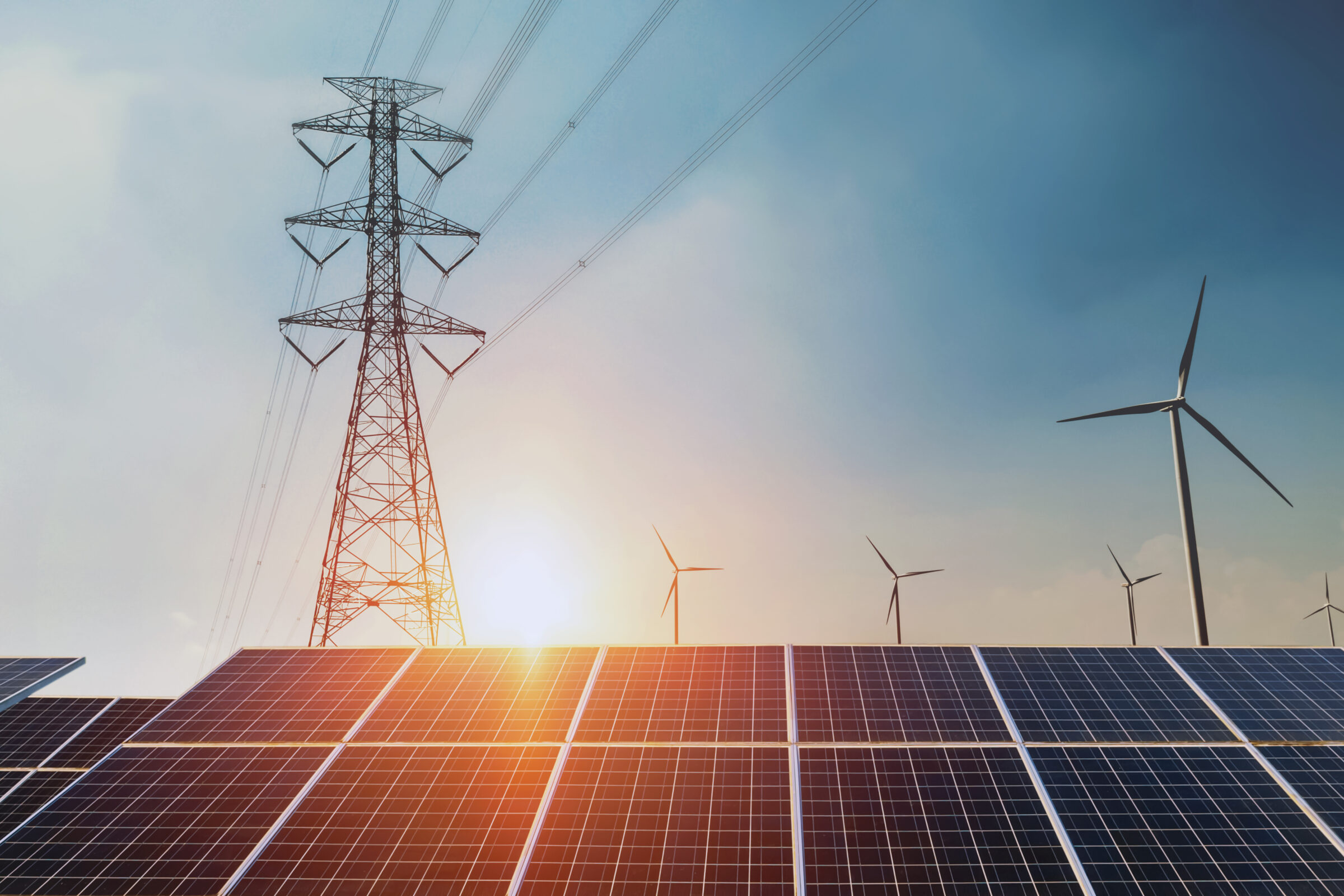Dear Chair Kennedy, Ranking Member Murray, Chair Fleischmann, and Ranking Member Kaptur,
As you consider, draft, and advance the Fiscal Year 2026 (FY 2026) Energy and Water Development Appropriations Act, we write to urge continued bipartisan support for robust funding for energy research, development, demonstration, and deployment (RDD&D) efforts at the Department of Energy (DOE).
As we enter a period of increasing electricity demand growth driven by America’s world-leading innovations in advanced technologies such as artificial intelligence (AI), a revitalization of our domestic manufacturing base, and the overall digitalization of modern society, the U.S. must continue to innovate and expand its energy capabilities. From the shale gas revolution to the proliferation of grid-scale batteries and the ongoing nuclear renaissance, research and development (R&D) activities at DOE are responsible for some of the key breakthroughs shaping America’s current legacy of energy dominance.
As a result of these efforts, the United States is not only the world’s second-largest overall energy producer, but also the global leader in production across the broadest base of resources of any nation.1 This dominance is a boon to our national security and economy, but as recently as 2018, the U.S. was a net importer of energy resources.2 As we confront the challenges and opportunities presented by the 21st century economic, security, and technological landscape, scaling back R&D efforts at DOE risks ceding ground and potentially missing out on energy technology breakthroughs that are not in plain view today.
Federal R&D supports high-risk, long-term endeavors—many later commercialized by the American energy industry. This cycle of public innovation and de-risking to private commercialization and adoption is a hallmark of America’s status as the world leader in R&D spending, estimated to provide a 2:1 dynamic return on original investment by the taxpayer.3 Recent advancements in enhanced geothermal systems, low-carbon hydrogen production, carbon capture infrastructure, and next-generation nuclear facilities are a testament to the pivotal role of DOE leadership in spearheading a true “all-of-the-above” energy approach—one where lessons learned from decades of innovation in solar, wind, and energy storage are increasingly informing improved outcomes across the broader energy ecosystem. As demand for new electricity generation this decade is forecast to reach the equivalent of 12 New York Cities4, it will require every resource and technology available to power the needs of the 21st century, including those whose commercialization is too high-risk and long-term for private actors to achieve alone.
While our R&D enterprise is the global gold standard, the U.S. transmission network remains a major barrier to progress in adapting our energy system to capitalize on future opportunities. The U.S. energized only 70 circuit miles of interregional transmission annually from 2011 to 20205—out of a total of 3,300 circuit miles—limiting wide swaths of the country from importing excess power in times of emergency and leading to congestion-driven price spikes amid normal peak conditions. With bipartisan support from Congress, DOE’s resource-agnostic grid initiatives are driving the multistakeholder response to one of America’s most pressing infrastructure challenges.
With such funding critical to unleashing domestic clean energy resources, safeguarding against emerging threats, catalyzing billions in private capital, creating thousands of good-paying jobs, and delivering low-cost electricity to families and businesses, we encourage the Subcommittees to consider the following:
- Grid Deployment Office (GDO): Established under the bipartisan Infrastructure Investment and Jobs Act (IIJA), GDO serves as the catalyst for the development of new and upgraded high-capacity electric transmission lines through public-private collaboration. We support the continuation of robust funding for the GDO to alleviate the planning, permitting, and rate challenges of vital transmission projects and increase the adoption of low-cost equipment to expand existing grid capacity, such as high-performance conductors (HPCs) and grid-enhancing technologies (GETs).
- Office of Electricity (OE): As the office responsible for the cyber and physical security of U.S. energy infrastructure, the OE oversees the Department’s R&D programs in partnership with local, state, and regional officials to keep essential services running. We respectfully urge the Subcommittees to maintain vital resources for the OE in FY 2026, including support for efforts to improve the availability and affordability of high-voltage direct-current (HVDC) technology, which can serve as jumper cables to “black start” the grid after an outage.
- Office of Energy Efficiency and Renewable Energy (EERE): The EERE has existed with bipartisan support for decades and driven advancements in America’s security and prosperity through the RDD&D of affordable, secure, innovative, and integrated energy technology solutions across multiple sectors of the economy—transportation, buildings, industry, and generation. We respectfully urge Congress to preserve critical funding levels in FY 2026 for the EERE, including the Solar Energy Technologies Office and the Wind Energy Technologies Office.
- Office of Manufacturing and Energy Supply Chains (MESC): The MESC plays a critical and unique role in catalyzing investments in the re-shoring of U.S. manufacturing across energy supply chains by tackling critical vulnerabilities and driving first-in-line investments in domestic capacity. We encourage Congress to uphold ongoing, adequate investment in FY 2026 for MESC to continue supporting rapid progress in America’s energy manufacturing capacity and competitiveness.
- Loan Programs Office (LPO): Since its establishment by President George W. Bush in 2005, the LPO has provided critical financing to American energy and manufacturing projects of all kinds. Through authorities such as the Title 17 Innovative Loan Guarantee program, the LPO prioritizes projects that meaningfully contribute to U.S. energy security, grid reliability, and affordable consumer costs. To scale the capital necessary for high-impact commercial energy infrastructure, we request the Subcommittees to ensure consistent and reliable funding in FY 2026 for Title 17 administrative expenses. To maintain project momentum and help ensure the federal government remains a trusted and dependable partner for U.S. companies active in the energy space, we also respectfully urge Congress to protect funding for the LPO’s existing loan commitments.
America’s energy opportunity zone is too vast to fill without federal investment and partnership. U.S. foreign adversaries are redoubling their efforts to overtake America’s pole position in R&D and, in turn, shape the global energy landscape for the future. It is always in America’s best interest to lead no matter the technology—securing supply chains, shaping global markets, and ensuring that the economic and national security benefits of the evolving energy landscape accrue domestically. Investments in DOE’s R&D energy and grid programs are therefore essential to ensure the United States remains dominant across existing energy generation technologies—and remains well positioned to develop and commercialize the next generation of technologies as well.
We thank you for your consideration and support for these programs in your FY 2026 appropriations legislation.
Sincerely,
American Council on Renewable Energy
1 EIA. Rankings about energy in the World (June 2025).
2 EIA. U.S. energy facts explained (July 2024).
3 Federal Reserve Bank of Dallas. The Returns to Government R&D: Evidence from U.S. Appropriations Shocks (November 2024).
4 Grid Strategies LLC. Strategic Industries Surging: Driving US Power Demand (December 2024).
5 Department of Energy. National Transmission Needs Study (October 2025).
Join leaders from across the clean energy sector.

What will our next 20 years look like? Here’s the truth: they’ll be better with ACORE at the forefront of energy policy.
Shannon Kellogg
Amazon Web Services (AWS)
